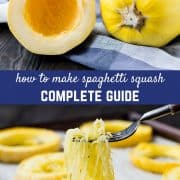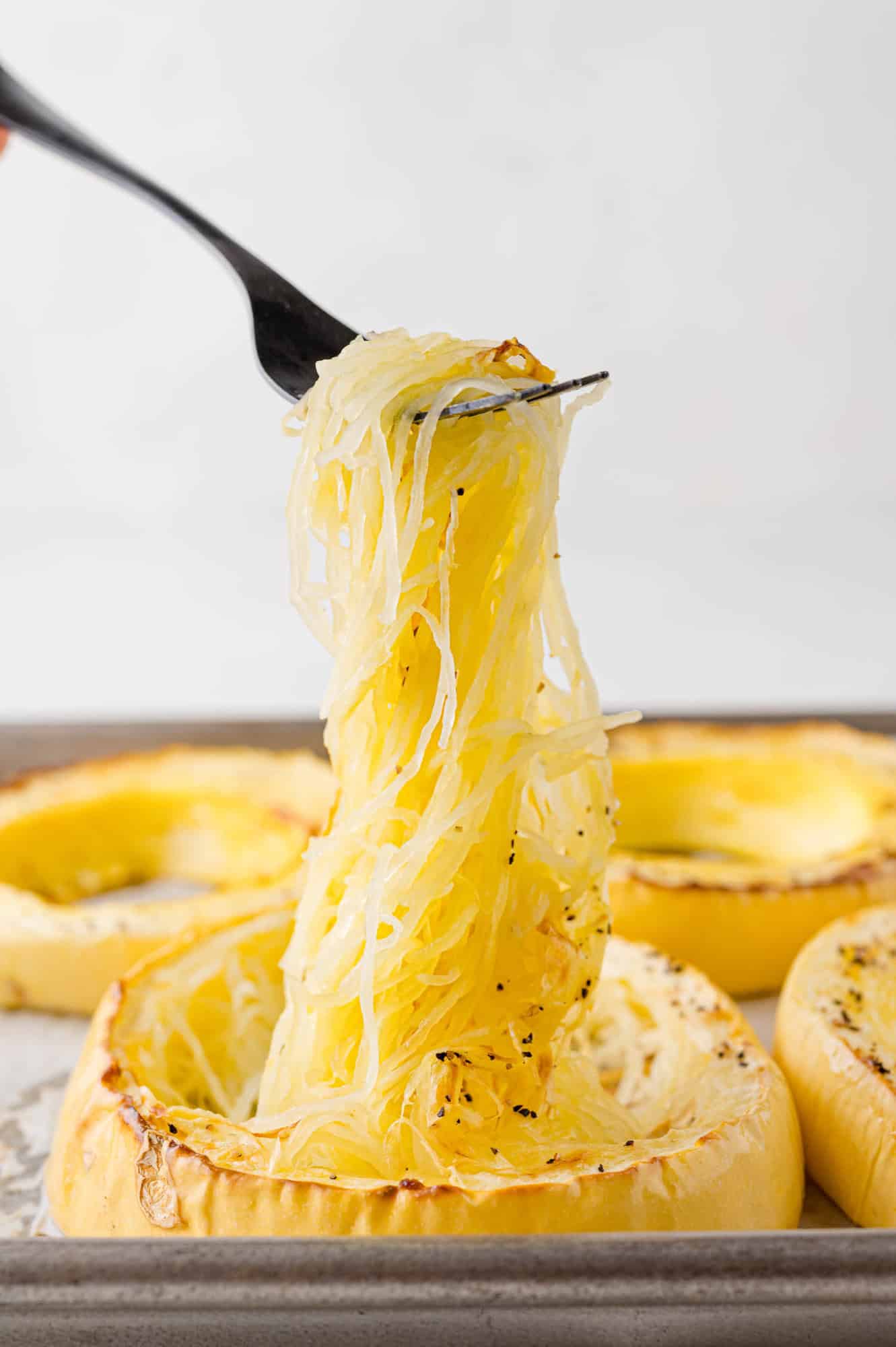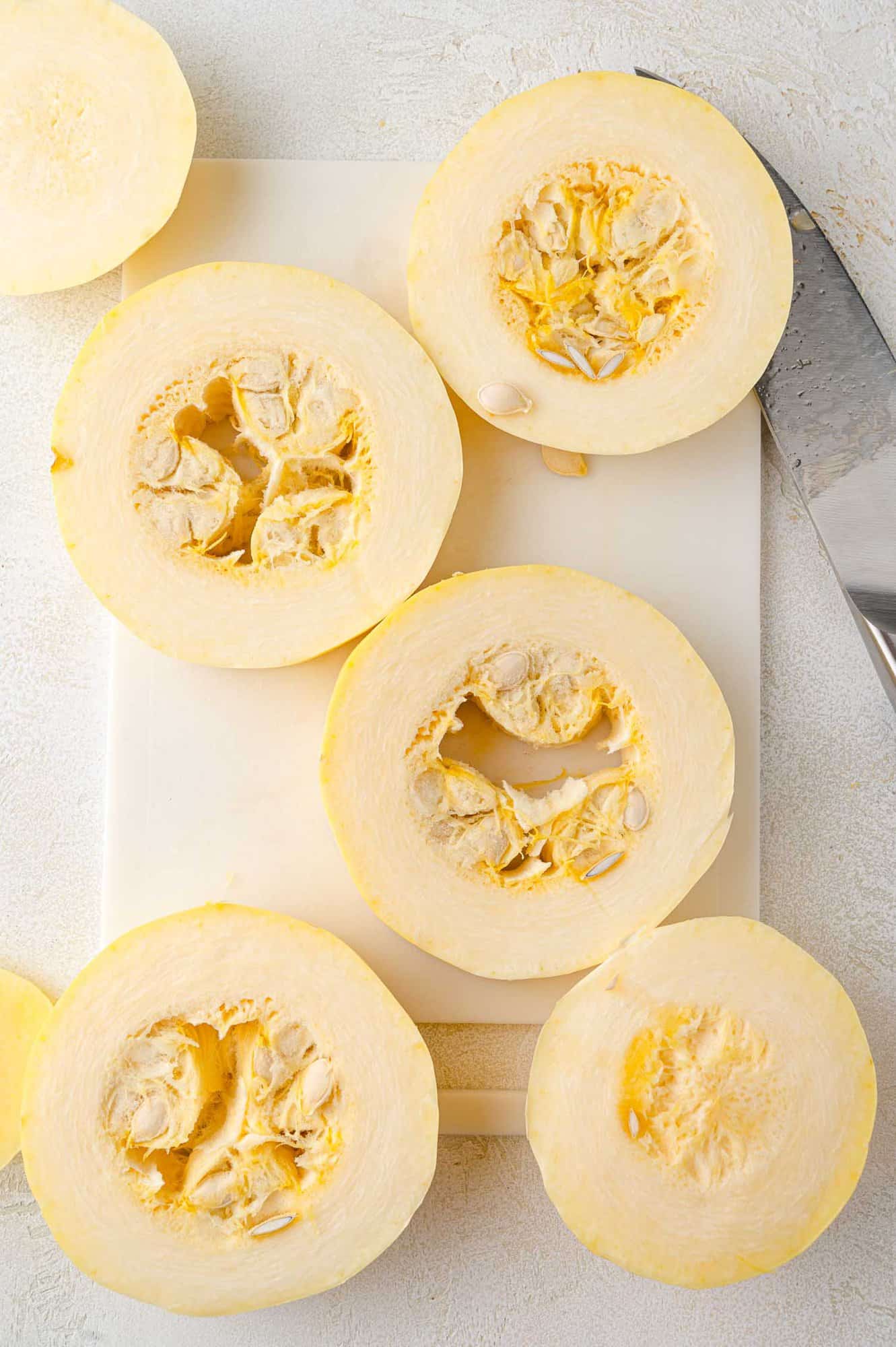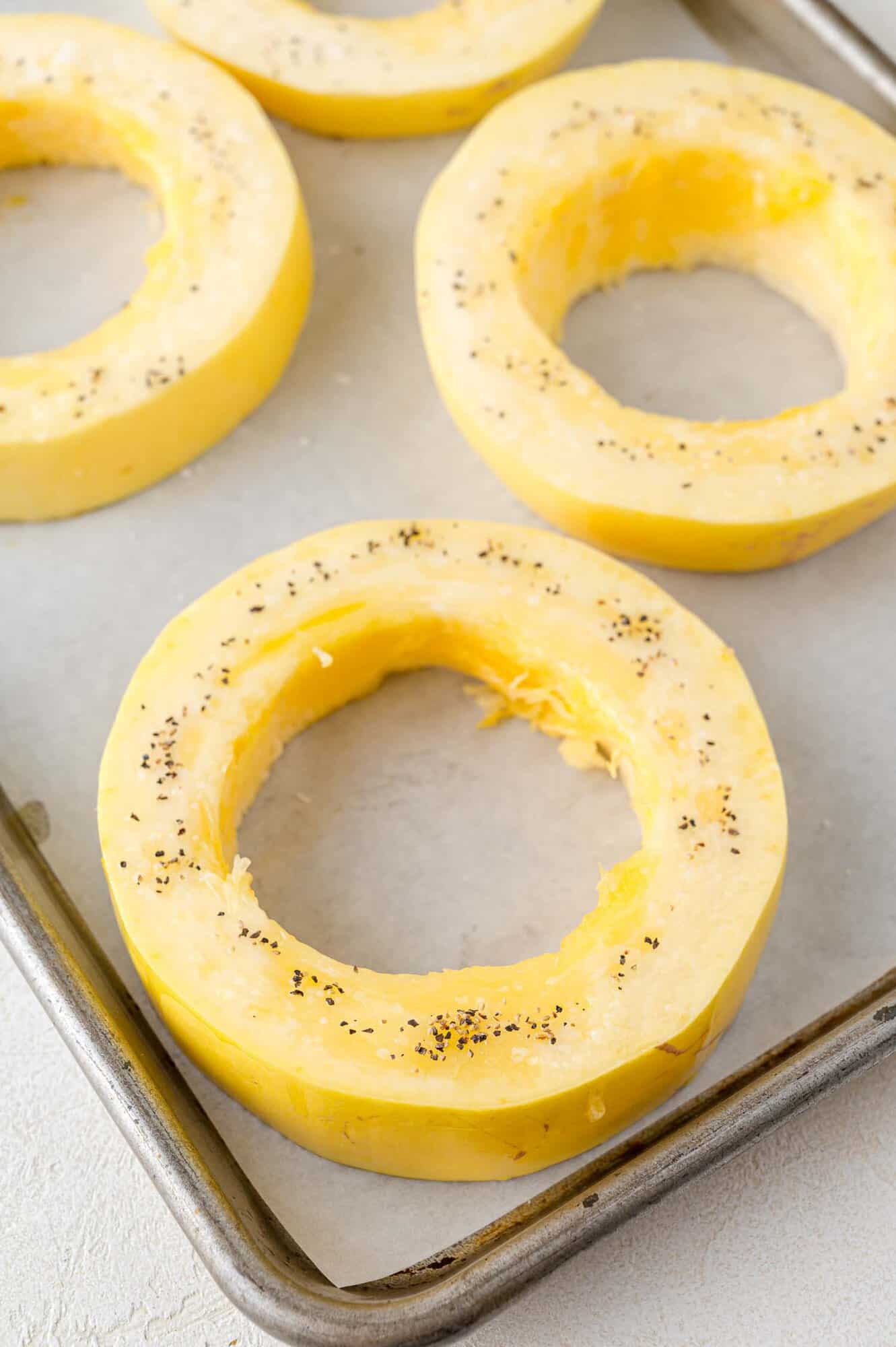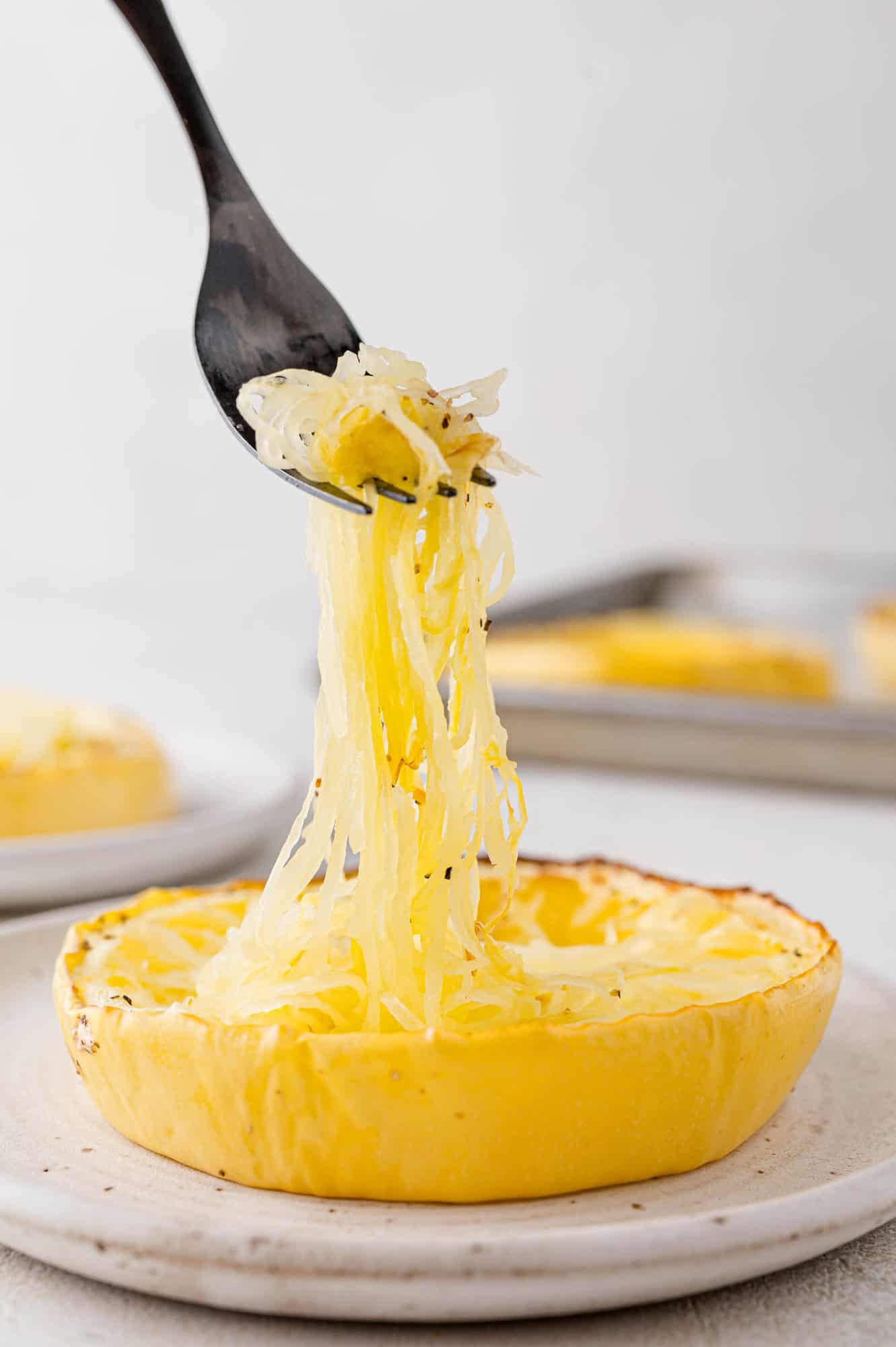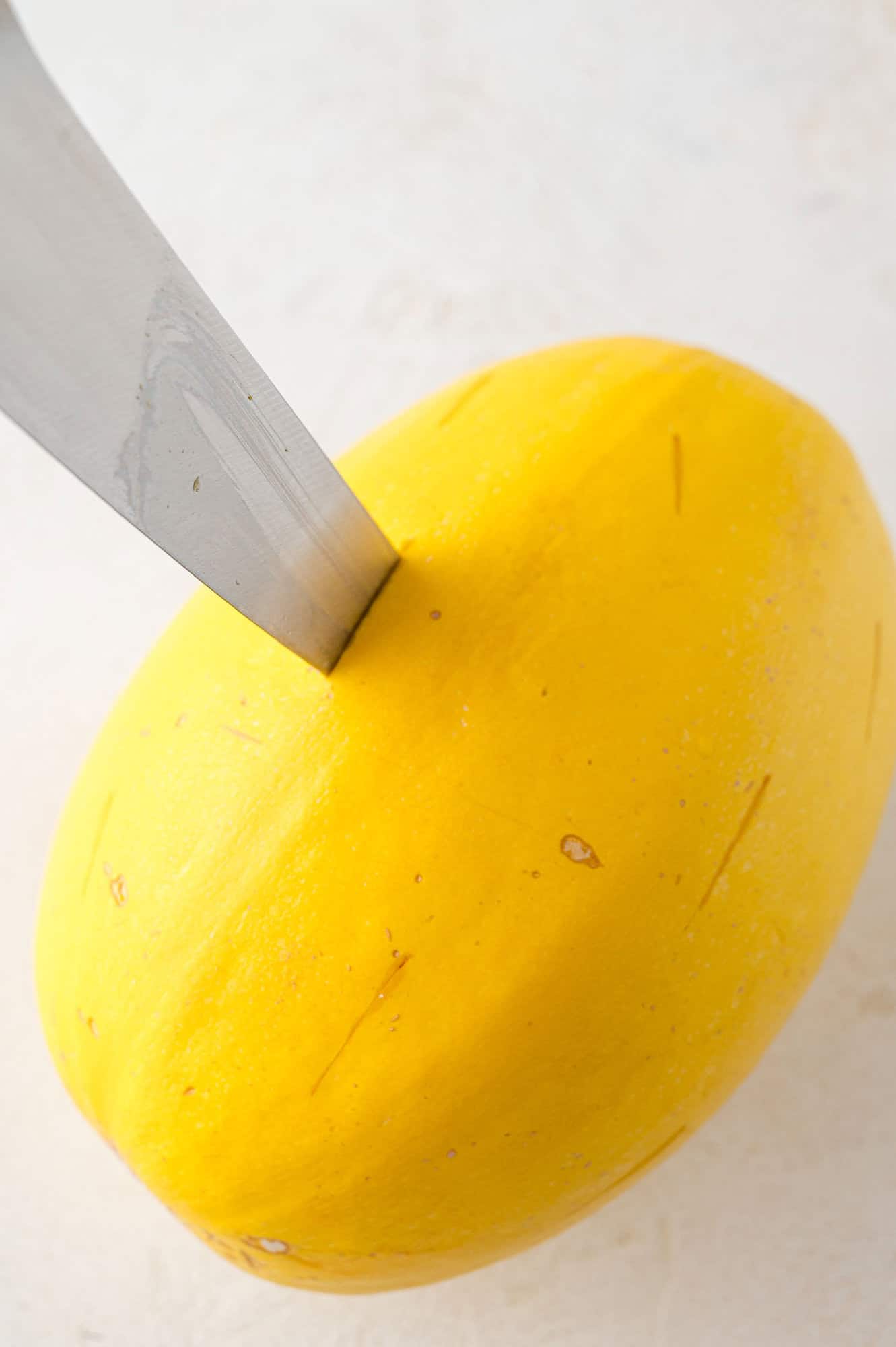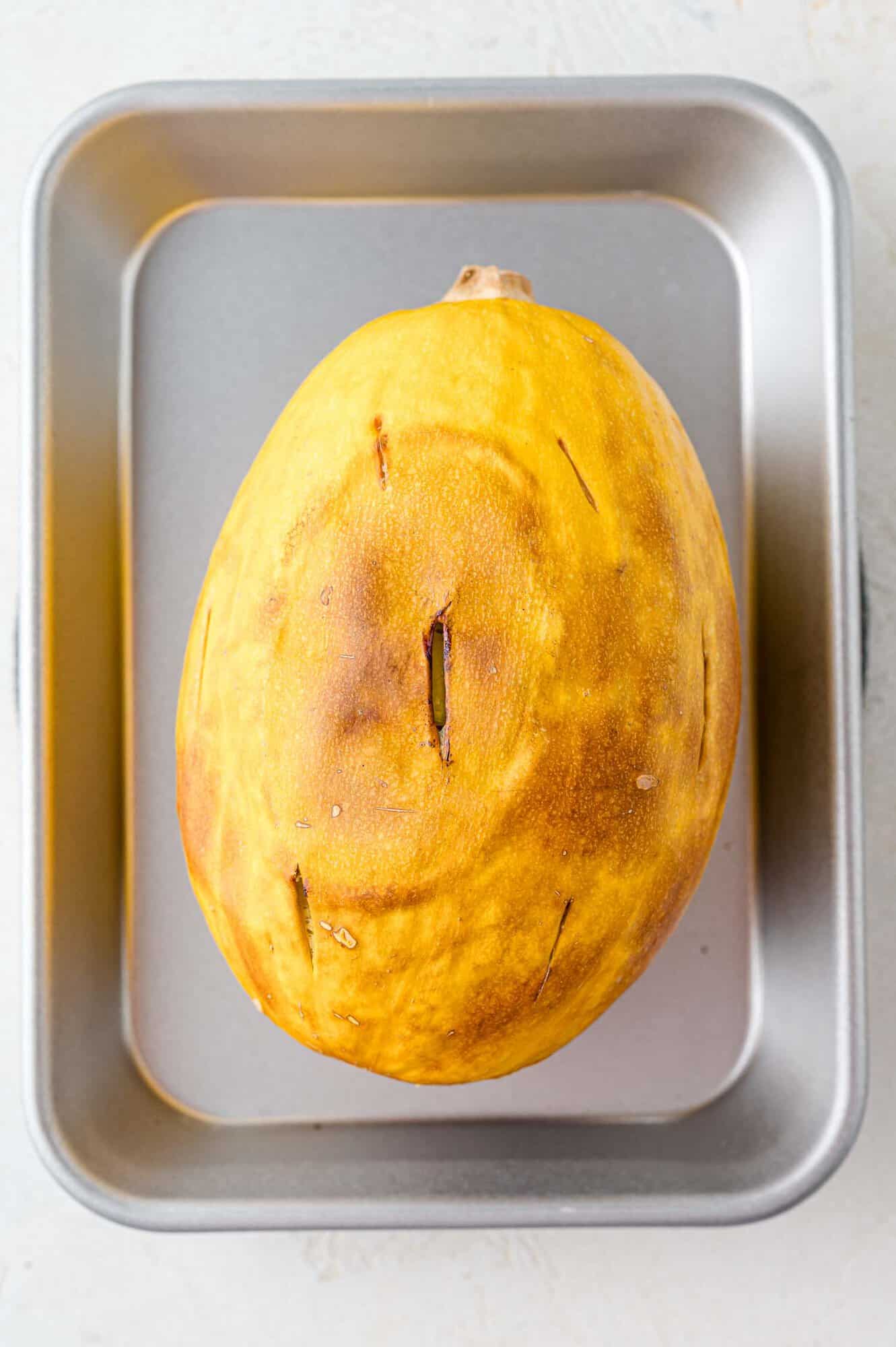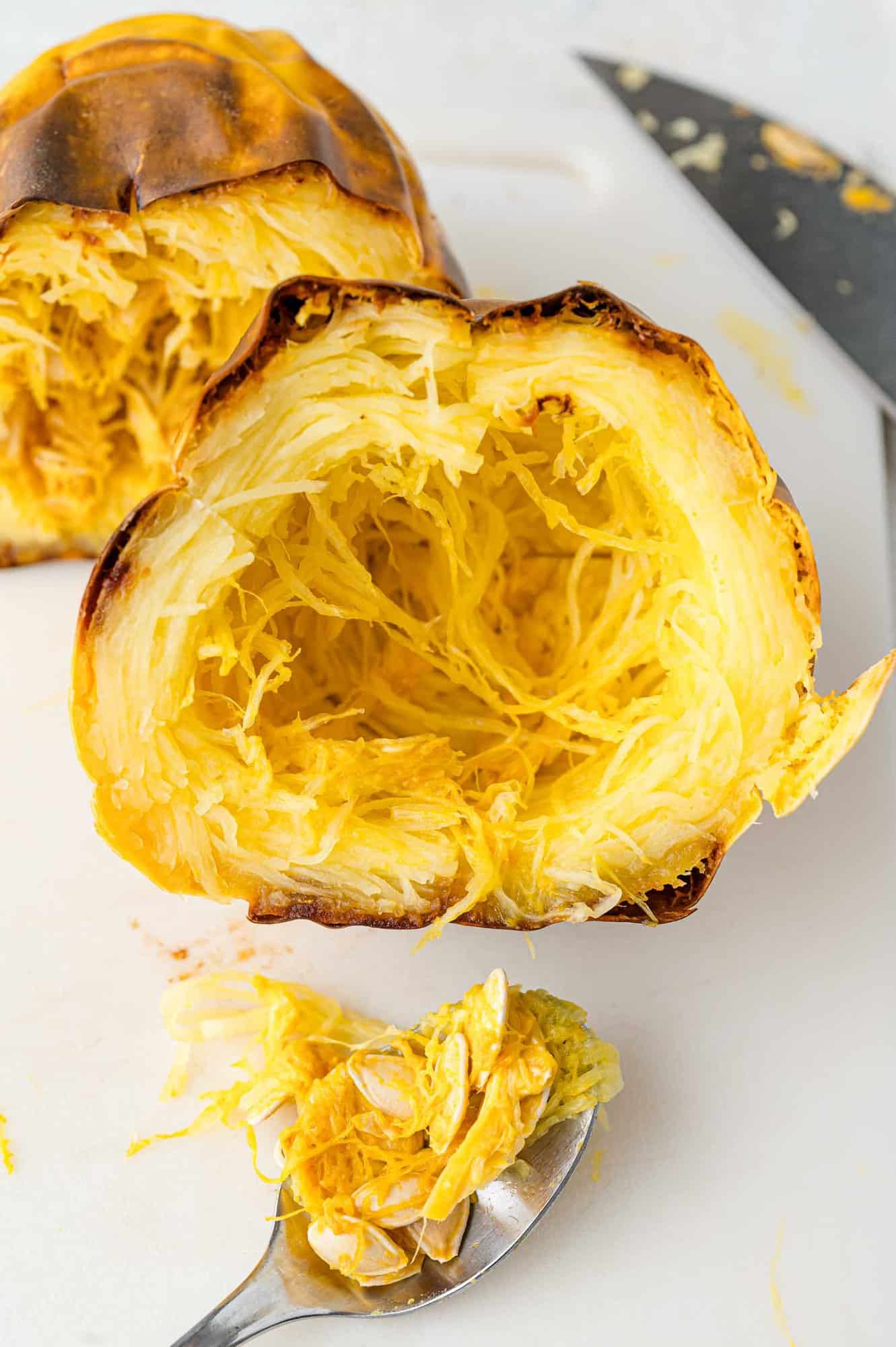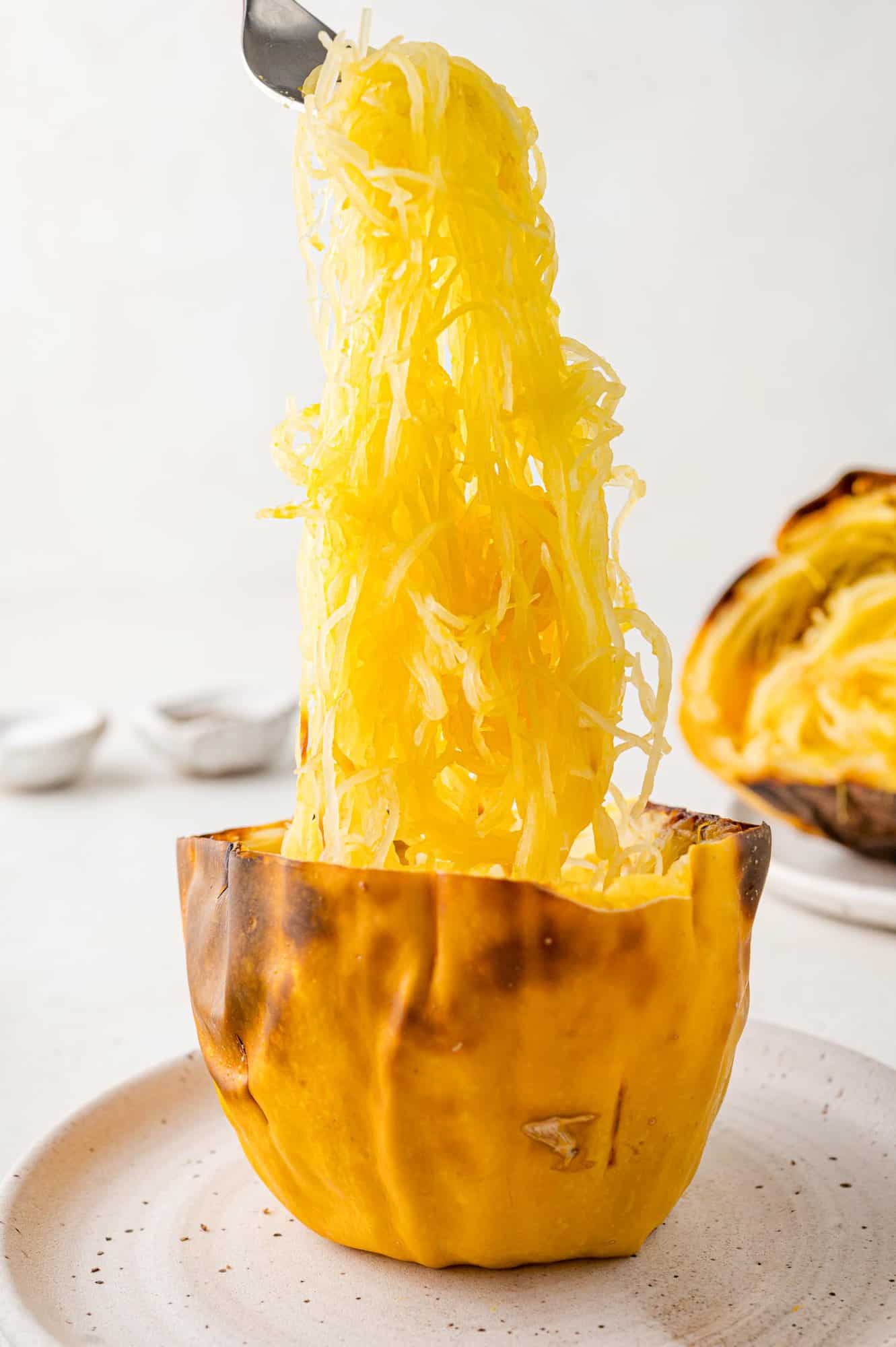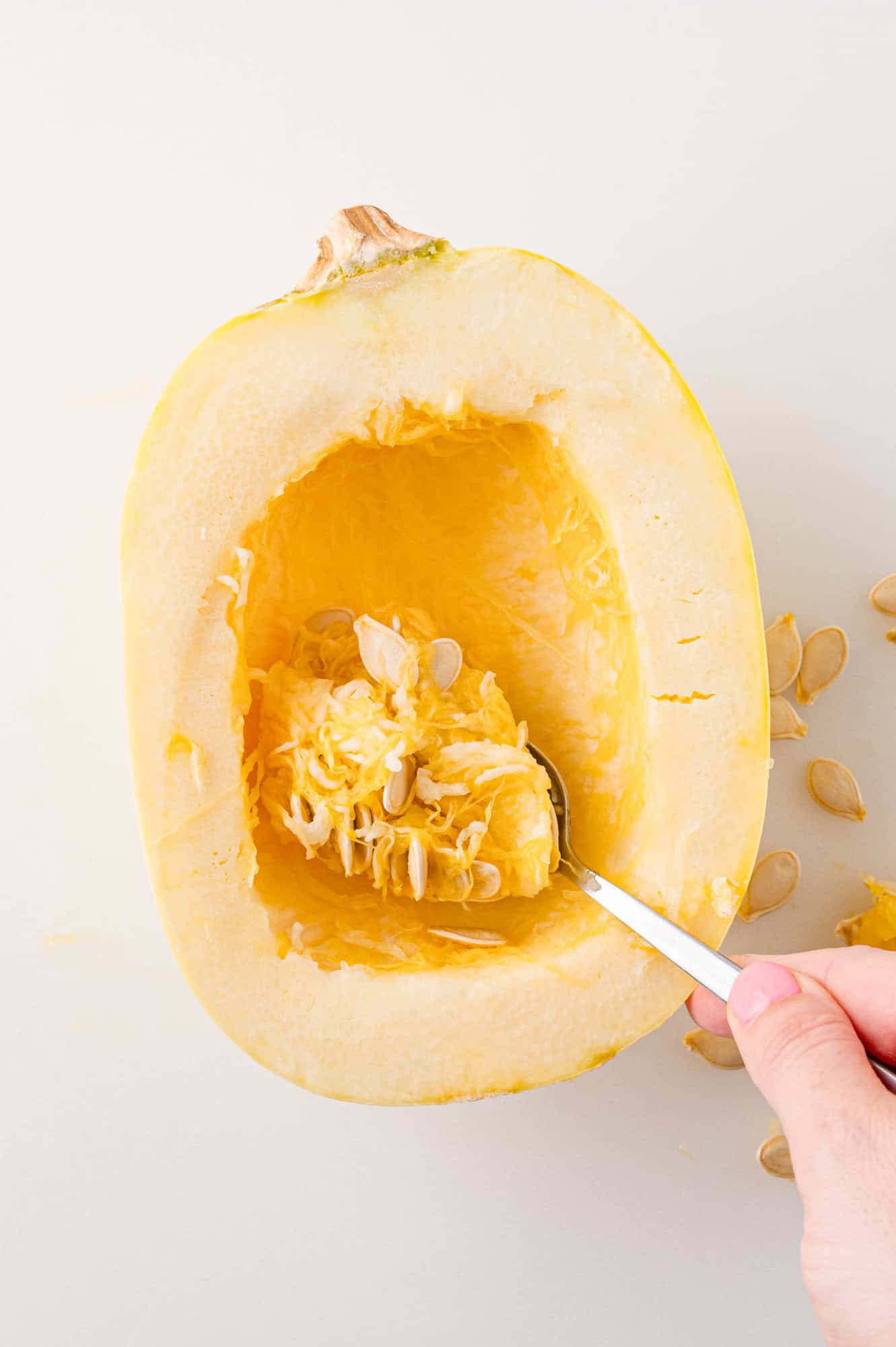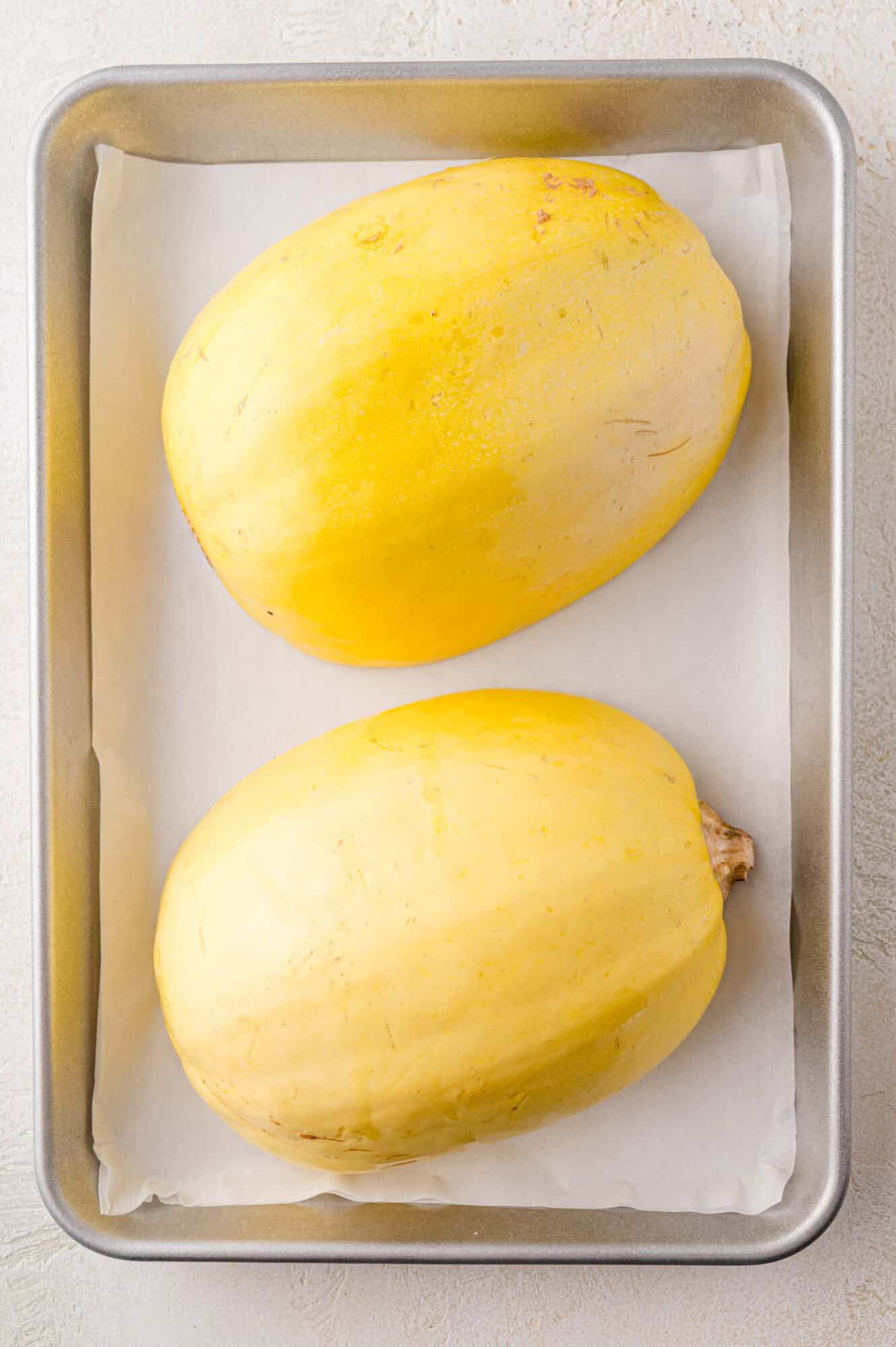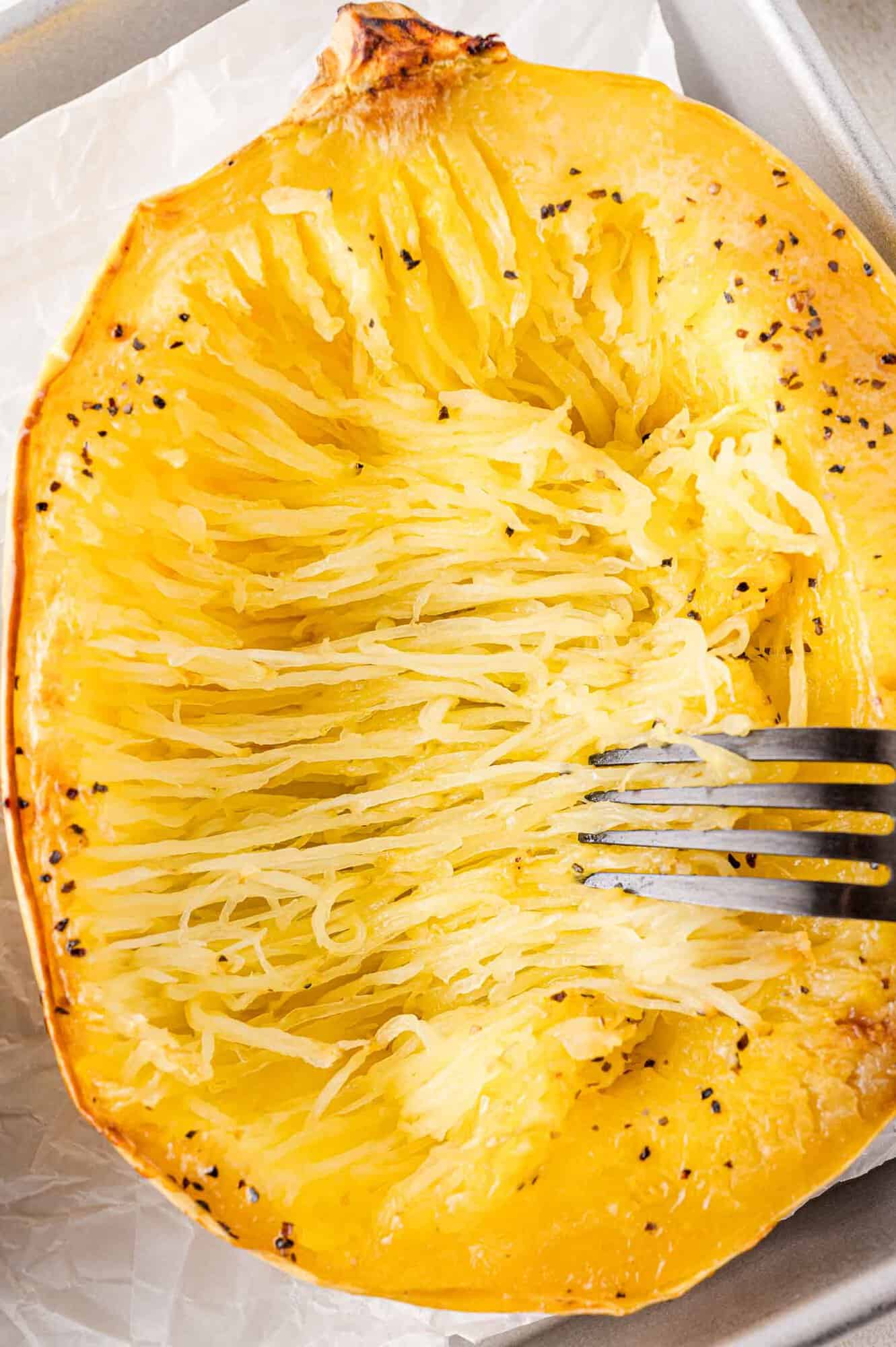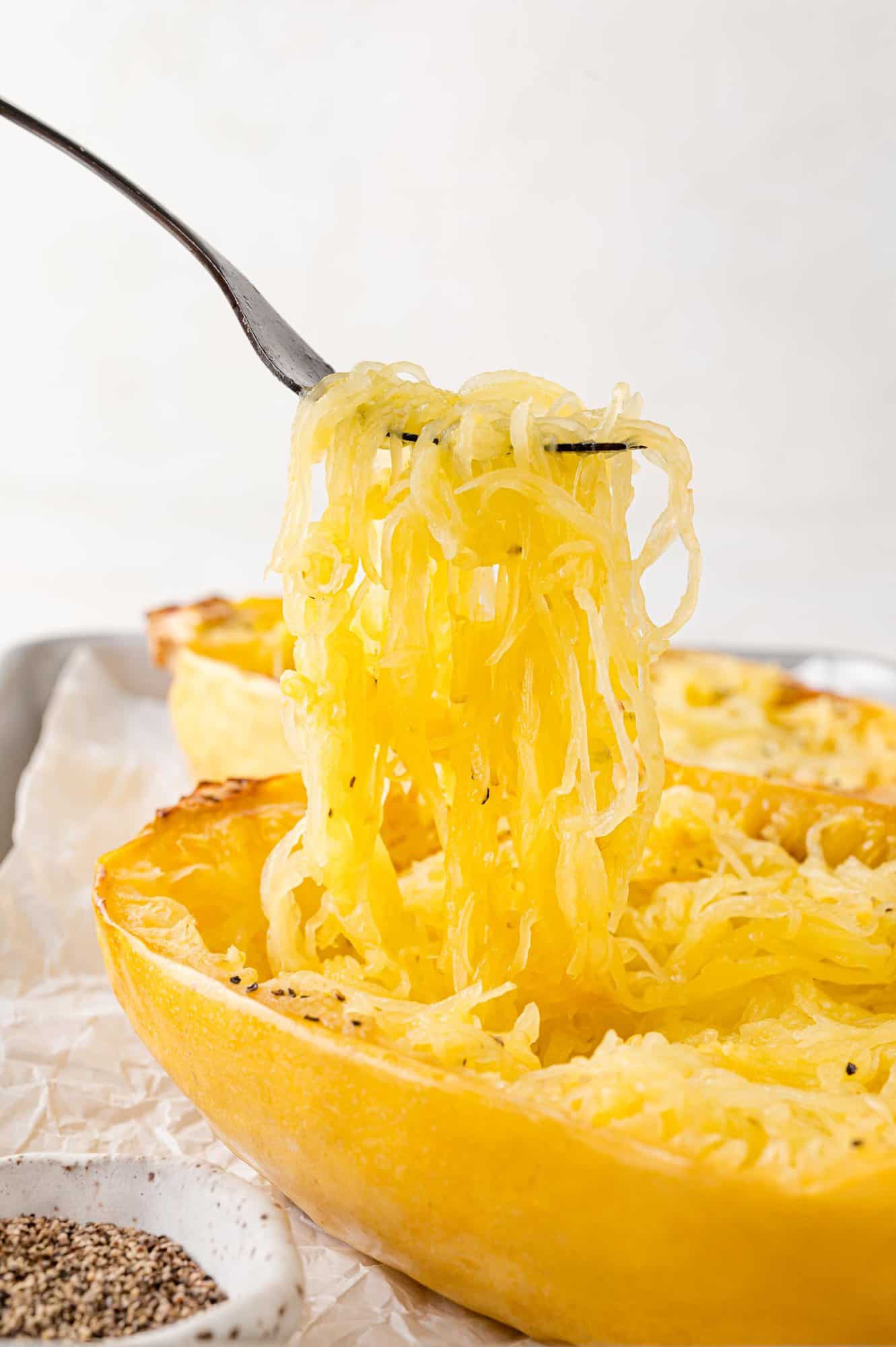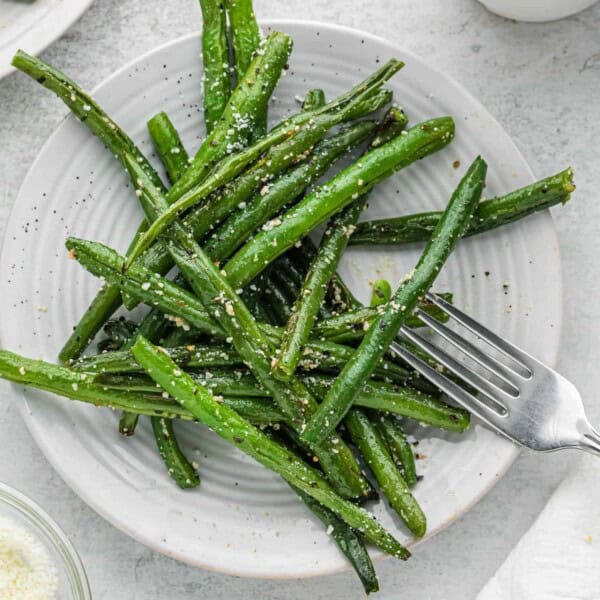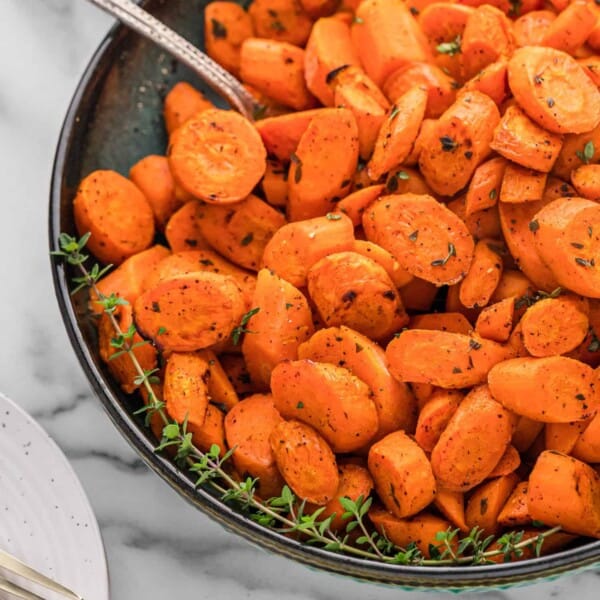How long it takes: 40 minutes to an hour (depending on how it’s cut) Equipment you’ll need: sharp knife, parchment paper, baking sheet Servings: 1 squash Because the oven is a drier heat, you get more caramelization and less moisture when you’re cooking cut squash, which means more flavorful spaghetti squash strands.
Baked Spaghetti Squash
Still practically effortless. While it does take a little more time and effort than the slow cooker and Instant Pot methods, don’t be mistaken: this method for how to bake spaghetti squash in the oven is still easy as can be. The best squash for saucing up. Because cut spaghetti squash isn’t as soggy as other cooking methods, it holds sauces better and doesn’t water them down. If you have a thicker sauce, it’s not a deal-breaker, but for something that tends to be a bit thinner, like jarred pasta sauce, you’ll appreciate the drier option. Low-carb pasta alternative—and more. Spaghetti squash is most well-known as a stand-in for traditional spaghetti or pasta, but it also works as a swap for rice and other grains that you’d use as a base for serving another recipe or for soaking up a sauce. I often serve spaghetti squash with Parmesan and herbs as a side dish.
Ingredient Notes
Spaghetti squash: You’ll need to cut the spaghetti squash if you’re cooking halves or rings, but you do not need to peel it. (You’ll discard the skin after cooking.) I still recommend washing it well to keep your knife from transferring bacteria from the skin to the flesh while cutting. Olive oil: This helps the squash brown nicely in the oven. Salt and pepper: To enhance the flavor of the finished cooked spaghetti squash.
How to Make Baked Spaghetti Squash
For all methods
Preheat your oven to 400ºF, scrub the squash, and line a baking sheet with parchment paper. Cutting the squash in rings or horizontally across the middle will yield the longest, most spaghetti-like strands.
To Cook in Rings
Use a sharp chef’s knife to cut the squash into 1-inch rings. (It can help to turn the squash a quarter-turn each time you cut a ring; it’s natural for your knife to angle a bit as you cut and this helps keep your cuts a bit more even despite this.) Scrape out the seeds, spray or rub the rings with oil, then season with salt and pepper. Set on the prepared baking sheet and bake for 40 minutes, or until tender. Cool slightly, then use a fork to scrape the flesh into strands. This is my preferred method, provided I have the time and energy to slice the squash into rings. It yields perfect strands of spaghetti squash every time and won’t leave you with soggy “noodles.”
To Bake Whole
Use a knife to pierce holes all over the squash so the steam inside can escape. Set the squash on the prepared baking sheet and roast until a knife slides in easily, flipping it over at the halfway point (around 30 minutes). It should take about an hour, but the cooking time can depend on the squash size. Let the squash cool until you can handle it comfortably, then slice it in half. (You can cut it stem-to-end or crosswise, depending on the size of strands you want.) Scoop out the seeds with a spoon, then use a fork to separate the strands. This method is quite straightforward and arguably the most well-known method of cooking squash. The squash steams on the inside, yielding softer, more watery spaghetti squash.
To Bake Cut in Half
Again, you can do this stem-to-end or crosswise. Stem-to-end will yield shorter strands, crosswise will yield longer strands. Scoop out the seeds, then coat the inside of the cut squash with olive oil. Season with salt and pepper. Set the squash cut-side-down on the prepared baking sheet. Roast until a knife slides in easily, or for about an hour. Let the squash cool until it’s safe to handle, then separate the flesh into strands with a fork. If I don’t feel like messing with the rings, this is always my next option and the method I use to cook many types of squash. It yields slightly soggier squash than with the baked rings. Choose this method if you’re planning on stuffing the squash after it’s baked.
Serving Suggestions
Spaghetti squash is a blank slate, just like normal spaghetti! You can try serving your cooked spaghetti squash with an easy turkey bolognese to start, but here are more options:
Vegan Bolognese Spaghetti Sauce with loads of tomatoes and basil, slow simmered on the stove Arugula Pesto (nut-free), Basil Pesto, or Cilantro Pesto Tomato Cream Sauce Cauliflower Alfredo Sauce Chicken Fajita Stuffed Spaghetti Squash: Baked squash halves are stuffed with all the fajita fixings, and broiled briefly. Pizza Stuffed Spaghetti Squash: Same as above, but with pizza toppings.
Storage & Reheating
Refrigerate: Cooked spaghetti squash will keep for about a week stored in an airtight container in the refrigerator. Freeze: Cooked spaghetti squash can be frozen for six months or more. After you bake the squash, remove the strands from the peel. Place the squash into a colander set over a bowl to drain. Cover, refrigerate, and let the squash strands drain at least 12 hours (overnight). Scoop the squash into freezer bags, flatten slightly, label, and freeze. To use, thaw it in the refrigerator overnight. It may not even take that long to thaw, depending on how you packaged it. Reheat: You can eat spaghetti squash cold or at room temperature or heat it up in the microwave or a skillet set over medium heat.
